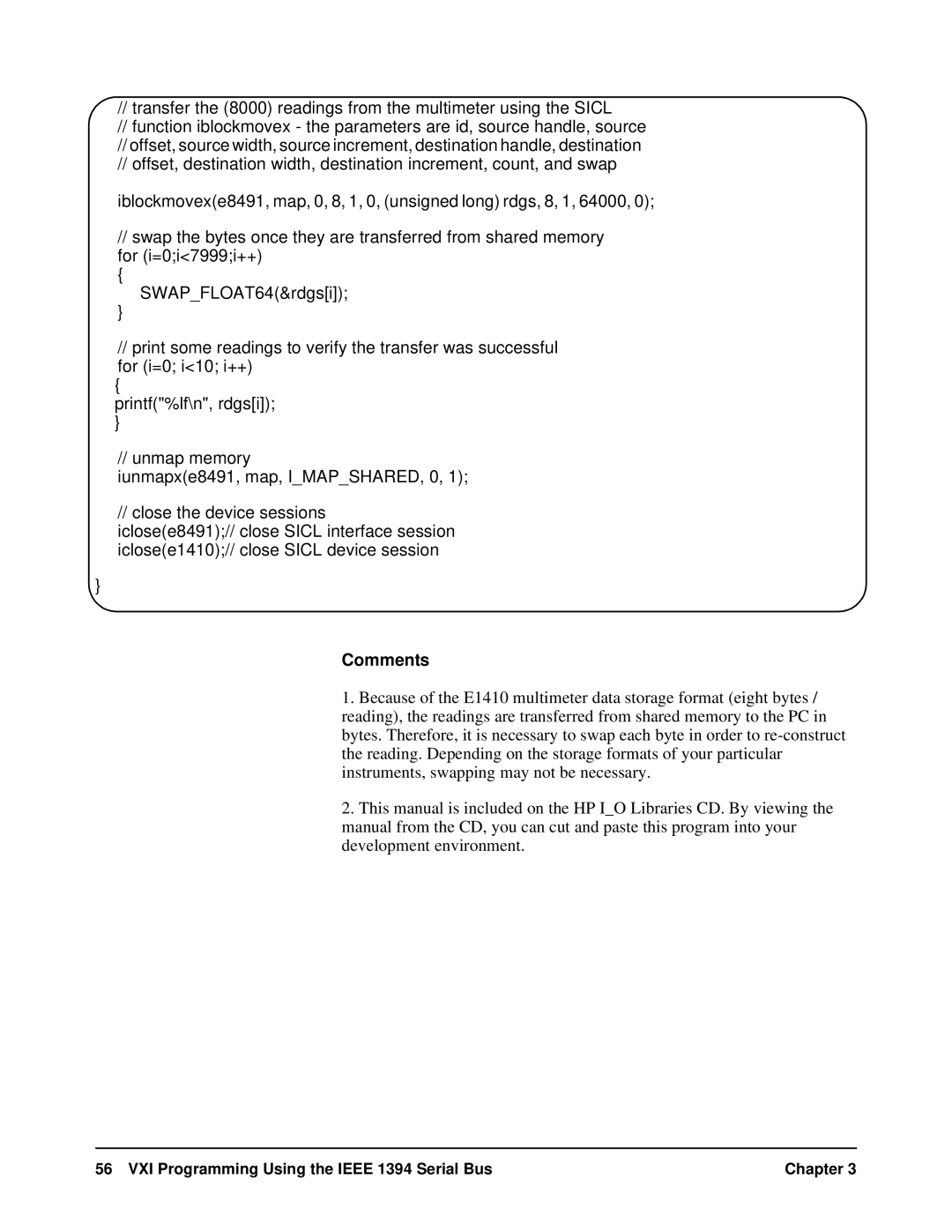
//transfer the (8000) readings from the multimeter using the SICL
//function iblockmovex - the parameters are id, source handle, source
//offset, source width, source increment, destination handle, destination
//offset, destination width, destination increment, count, and swap
iblockmovex(e8491, map, 0, 8, 1, 0, (unsigned long) rdgs, 8, 1, 64000, 0);
//swap the bytes once they are transferred from shared memory for (i=0;i<7999;i++)
{
SWAP_FLOAT64(&rdgs[i]);
}
//print some readings to verify the transfer was successful for (i=0; i<10; i++)
{
printf("%lf\n", rdgs[i]);
}
//unmap memory
iunmapx(e8491, map, I_MAP_SHARED, 0, 1);
// close the device sessions
iclose(e8491);// close SICL interface session iclose(e1410);// close SICL device session
}
Comments
1.Because of the E1410 multimeter data storage format (eight bytes / reading), the readings are transferred from shared memory to the PC in bytes. Therefore, it is necessary to swap each byte in order to
2.This manual is included on the HP I_O Libraries CD. By viewing the manual from the CD, you can cut and paste this program into your development environment.
56 VXI Programming Using the IEEE 1394 Serial Bus | Chapter 3 |
